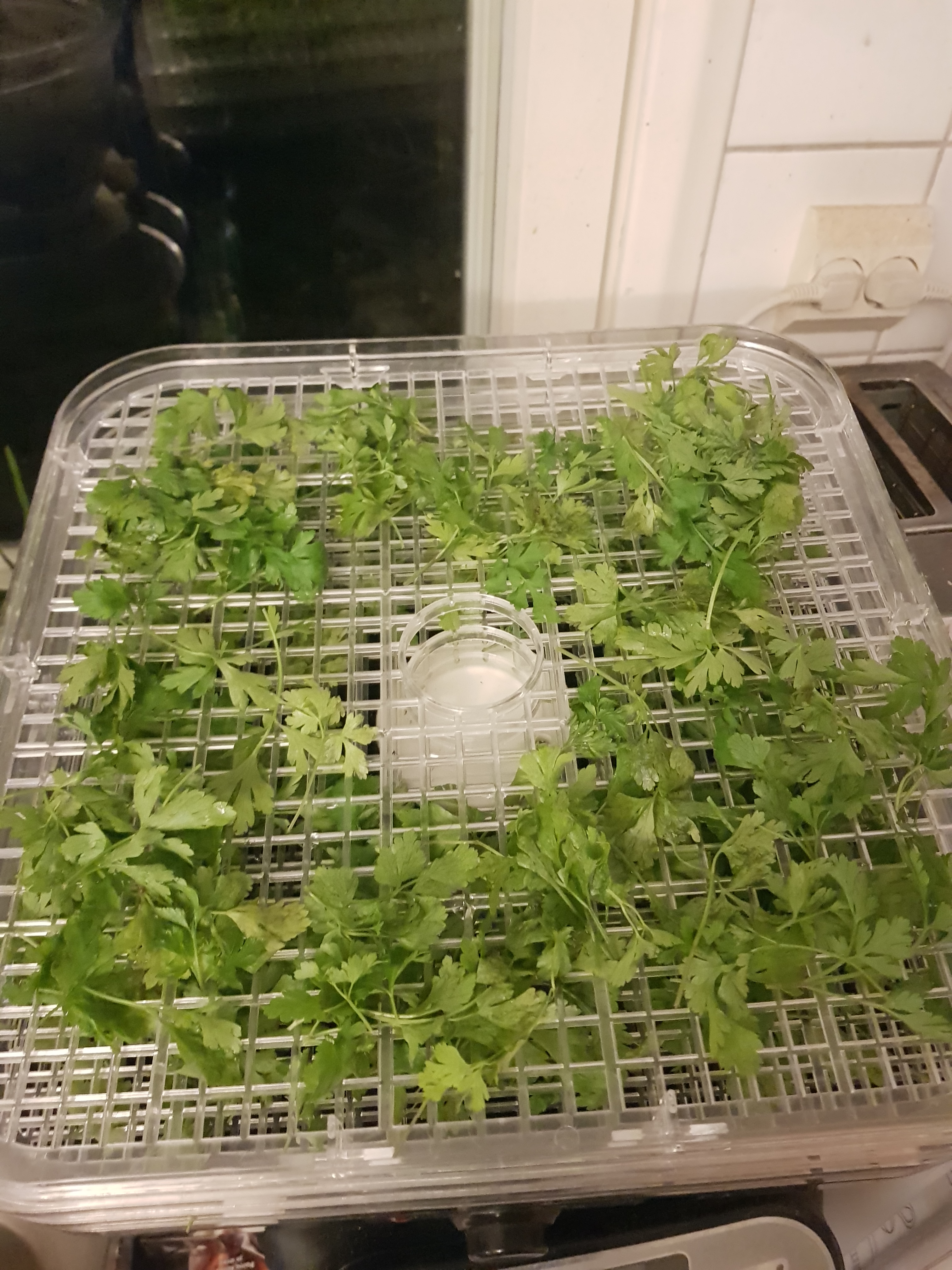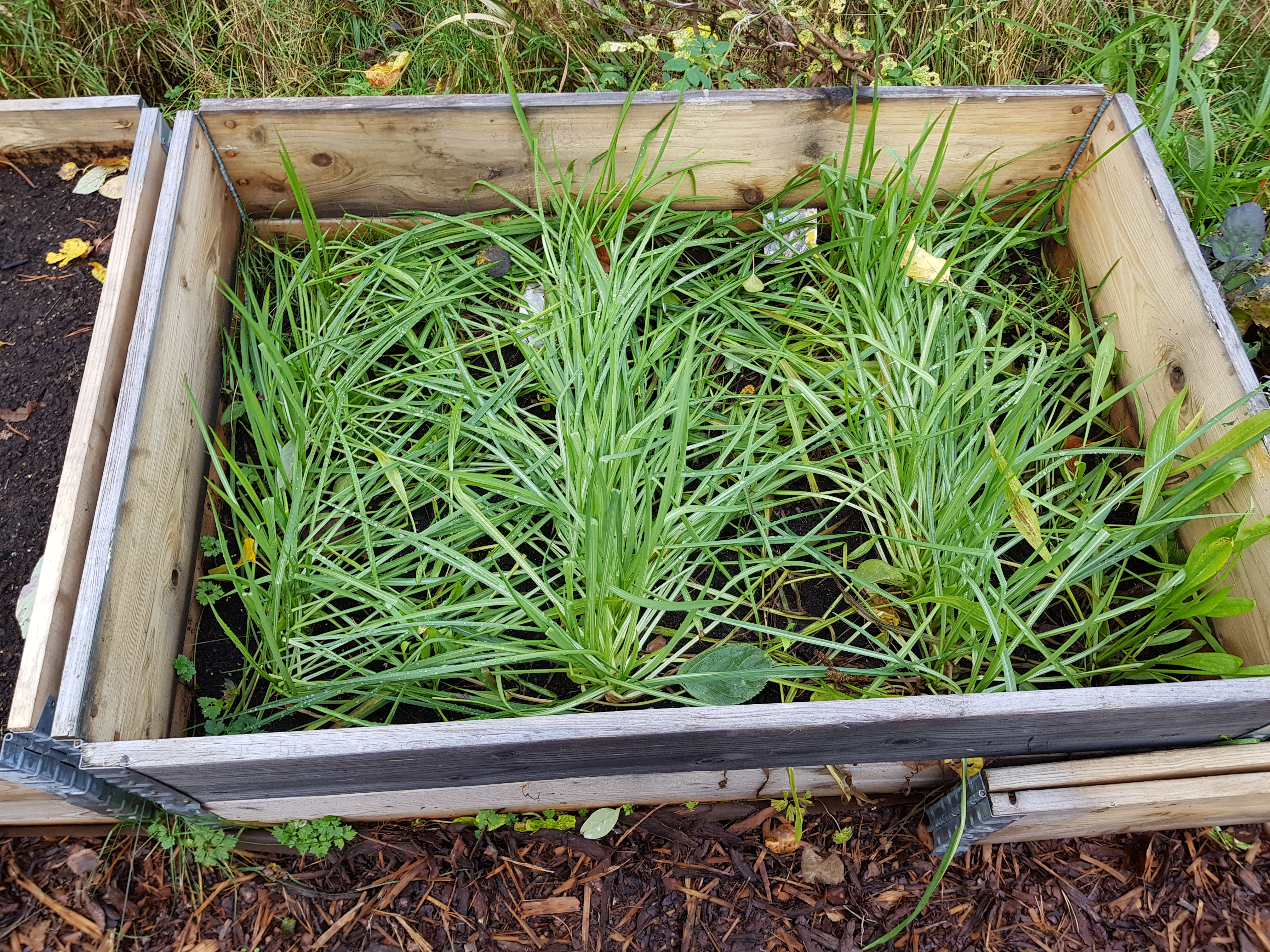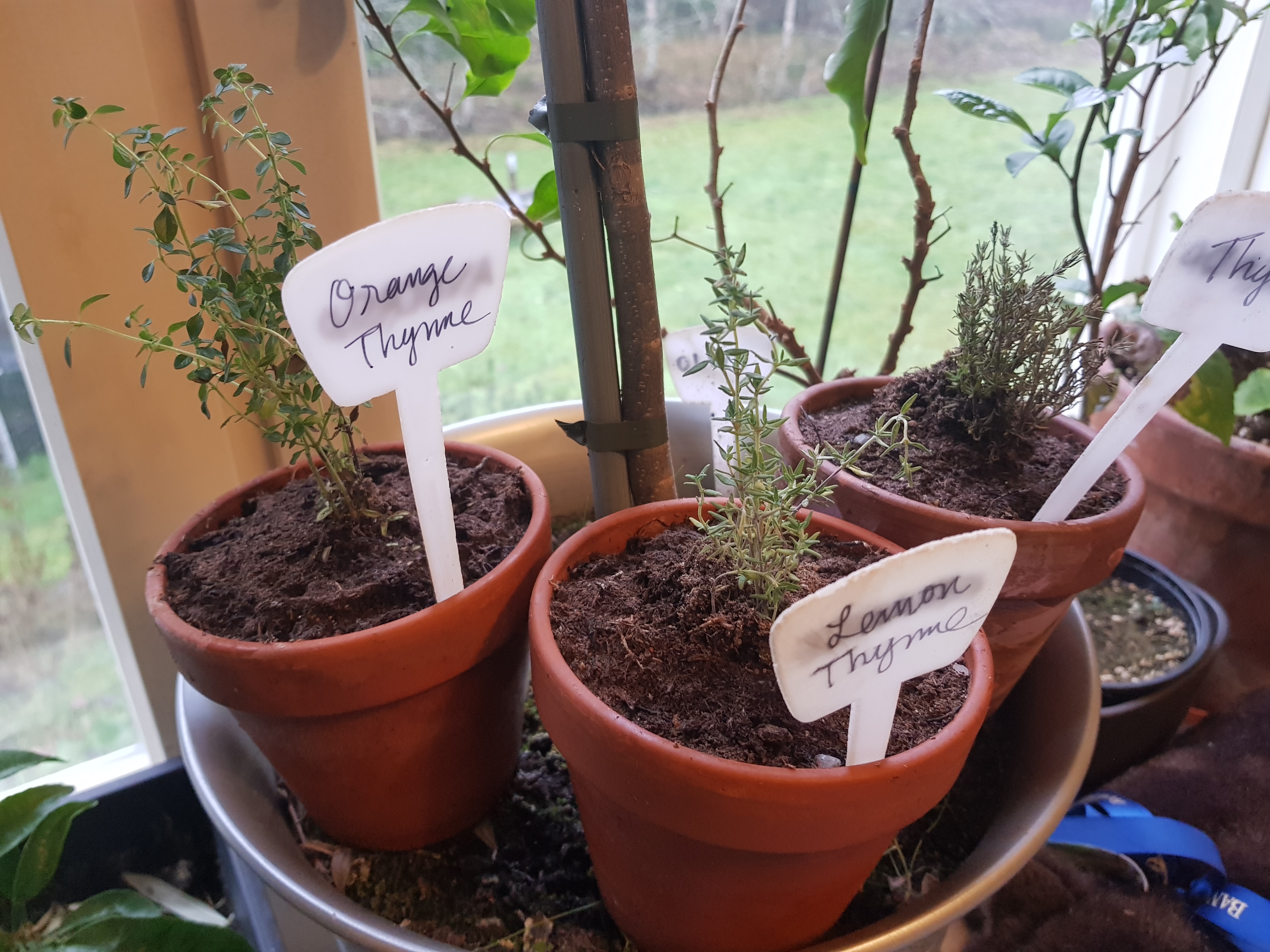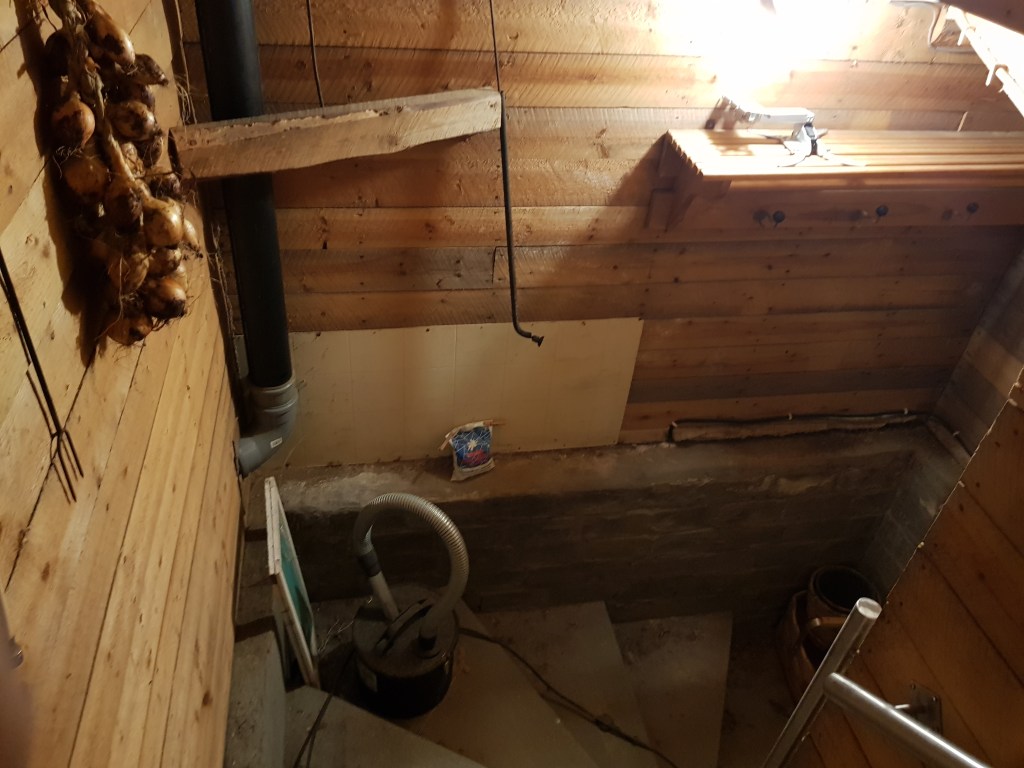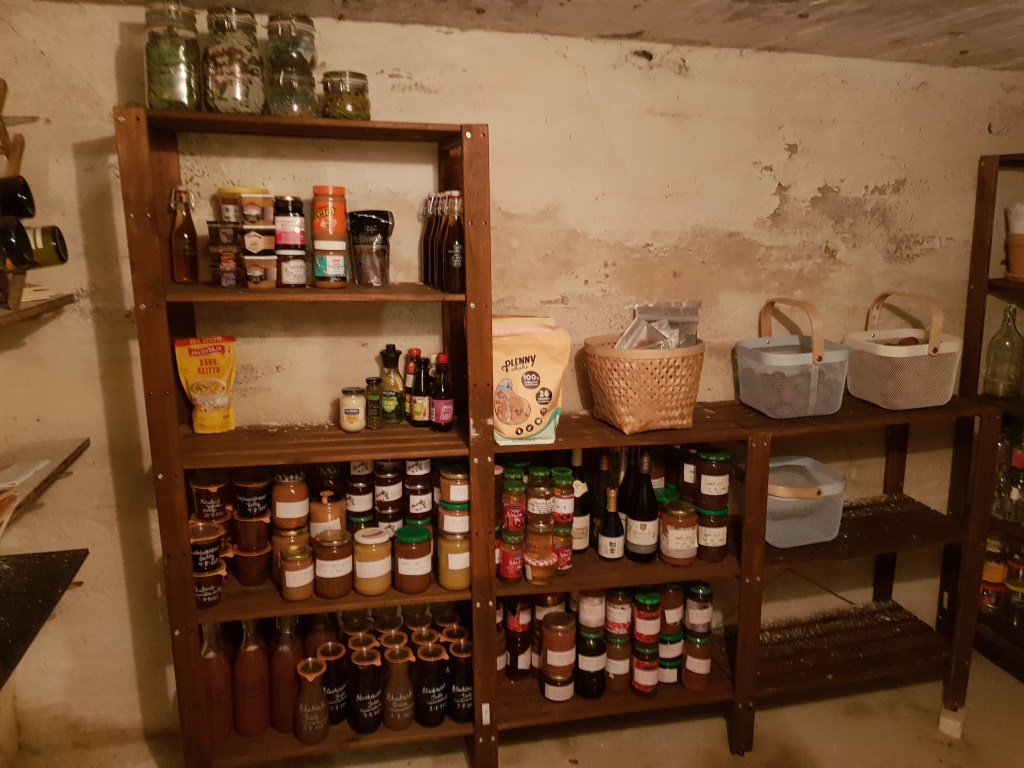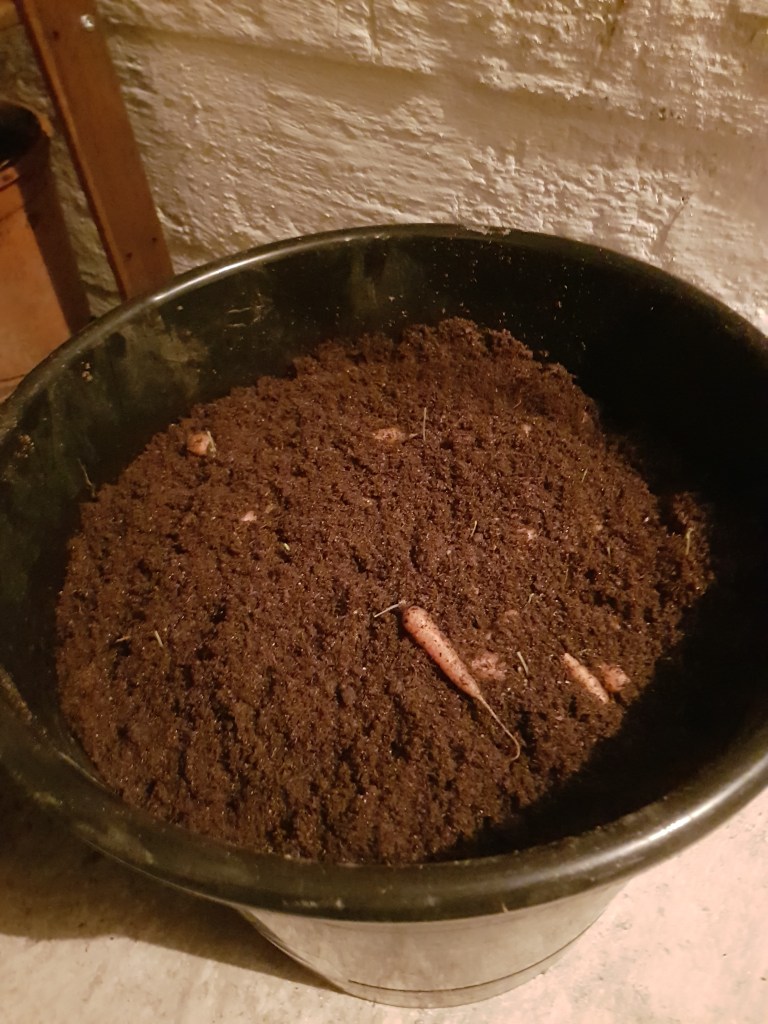First post of winter, brrr! Our nights have consistently been dipping below 0°C now, though not very far below most of the time. Enough to justify a fire in a woodstove and candles everywhere, though! There are about six hours between sunrise and sunset at the moment, though that’s closer to five hours of usable light on a good day, and it’ll drop to four by next month. It’s dark when I leave the house in the morning and dark when I get back from work, so the first time I’ve seen the garden all week was actually Friday afternoon. It keeps me from dwelling too much on outdoor chores, at least.
1. The last of those chores was to dig up the Jerusalem artichokes for storage in the root cellar. The bag I got wasn’t labeled, but I believe these are ‘Red Fuseau’ after reading some descriptions online. I planted only one tuber in the spring, so didn’t know what to expect. That resulting plant has given us a little over 20 tubers of various sizes, so that worked out pretty well! I plan to cook half of them in some sort of soup and plant up the rest this spring in their own bed. In the meantime, they are safely snoozing away in a root cellar bin.

2. Speaking of the root cellar, I was asked for specifics about carrot storage, so I thought I’d show you what I did. I’ve found that carrots and beetroots will survive the winter just fine in a mesh basket in the cellar, though they start to get wrinkly after a few months. Packing them with damp-ish material is supposed to help, so I chucked my first crop of carrots into a big bucket with sterile bagged potting moss. Potting moss mix is made from sphagnum moss (not peat!) which stays nice and airy, absorbs moisture well, and also seems to inhibit microbes. It serves as packing material in the winter and then is used for potting up plants in the spring!
After calculating the amount of space I needed for the rest of the root vegetables, I bought some stacking plastic feed bins to store the rest. Since I harvested the carrots during the wet season, I didn’t bother to dampen the moss, and let it instead suck out any excess moisture from the carrots, to be used later. Roots are placed in the moss so they don’t touch, with a layer of moss separating each layer of carrots like a giant veggie lasagna. Anything else that’s prone to drying out got similar treatment.
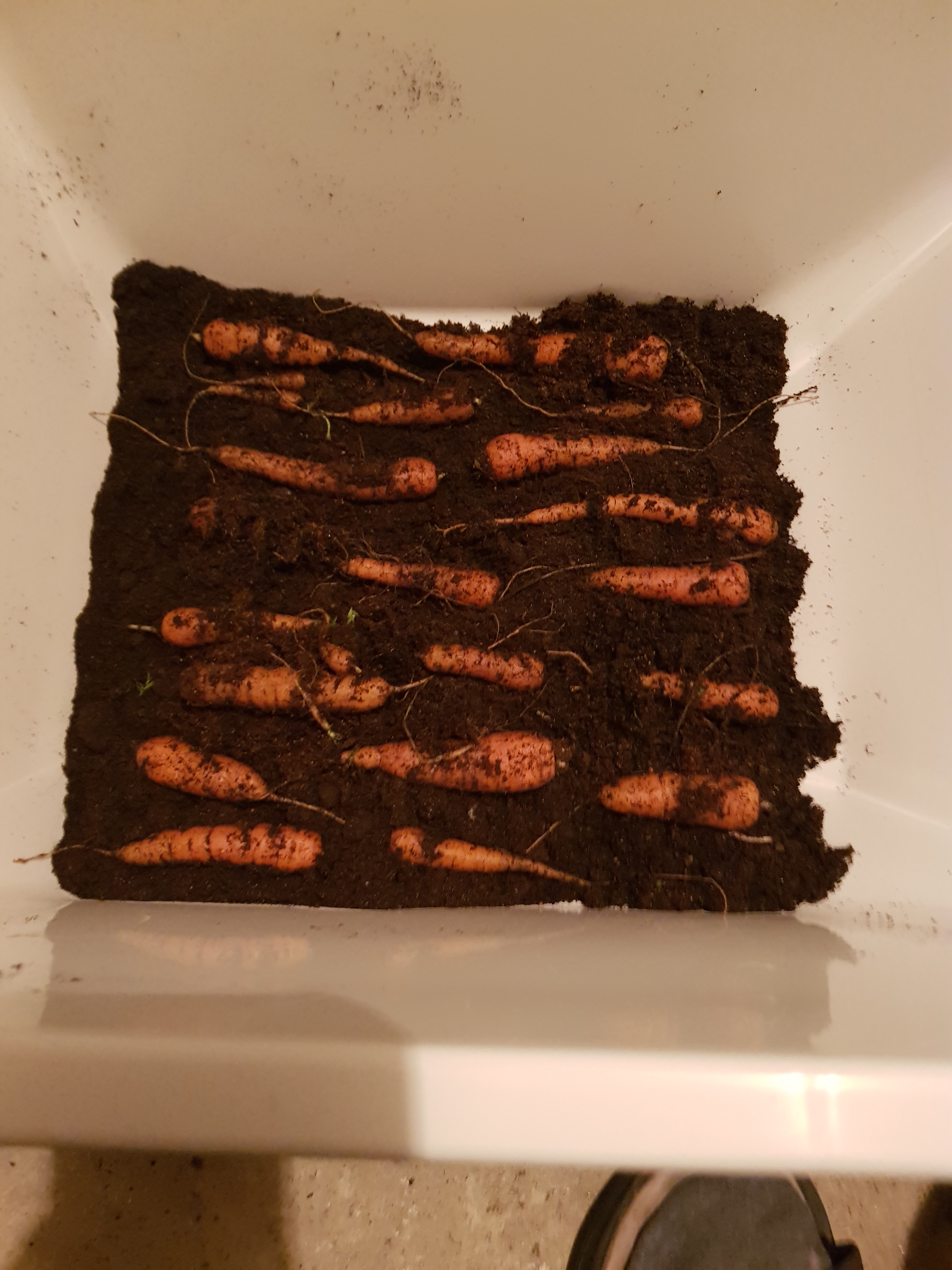


3. A walk in the garden this morning found everything covered by a light layer of snow. Not enough to make for pretty landscape photos yet, though. These rose hips have colored up well and provide welcome relief from all the brown and white. I’m leaving them for the birds, who are currently more interested in emptying the feeder under the kitchen window. That’s been refilled with oil sunflower seeds, which always attract a party. Speaking of sunflower seeds, I shall have to buy new packets for spring because the heads that I harvested last month got eaten by sneaky mice in the barn whilst they were drying! Lesson learned.
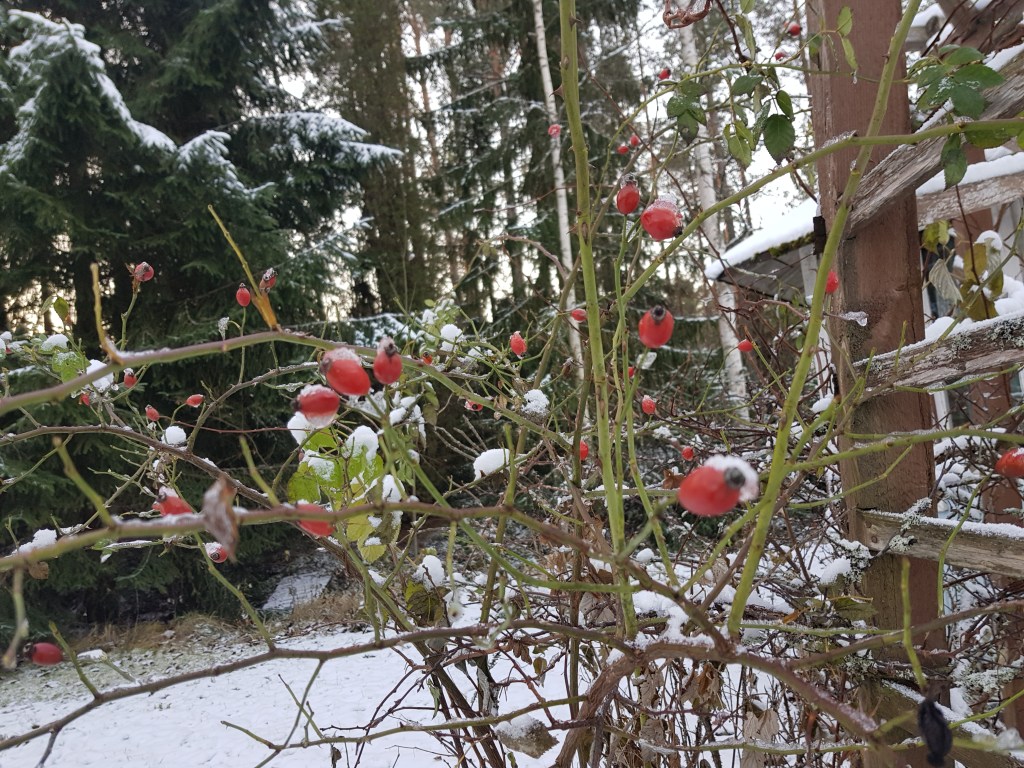
4. Back inside we go to visit some green friends. Here are two baby brugmansias. The one on the left is a white one I started from seed. The one on the right is a cutting from a local gardener and should have peach flowers. They will both take a few more years before they are mature enough to bloom, so I am happy that they have adjusted to life under a grow light on a windowsill.

5. Back at the beginning of 2021, I saw this thing on Pinterest about growing your own lemons from seed and decided to try it. They said to go buy a nice organic lemon from the store because those would have the best seeds. So I came home with this big, beautiful lemon from the fancy fruit section, which I let sit on the counter for a few days until I could have some uninterrupted gardening time. I dreamt of a pot full of fragrant little seedlings from this plump paragon of a lemon. Then I finally cut it open to find… it was all flesh and no seeds. Not one. Nada. Oh, the disappointment. It made great lemonade, though.
I still had a pot with a little greenhouse dome prepared for planting, so I rummaged through the fridge drawer and pulled out one of those six-in-a-plastic-net-bag bargain lemons from Lidl and cut the seeds out. They all sprouted and I was giving out baby lemon trees that spring to anyone who wanted one. Here is the one I kept, 2.5 years later.

6. One of our current propagation projects. My son’s Echeveria disintegrated this past summer. Whether it was due to overwatering, underwatering, or some other factor (probably cat-related), we are not certain. He was upset. This kid loves his succulents. I told him not to worry, we could plant them like seeds and get more plants! Thankfully, I was not proven a liar. Look at all the baby Echeverias!

Thanks for visiting and please do check out what the other SoSers are doing over at Jim’s page!



